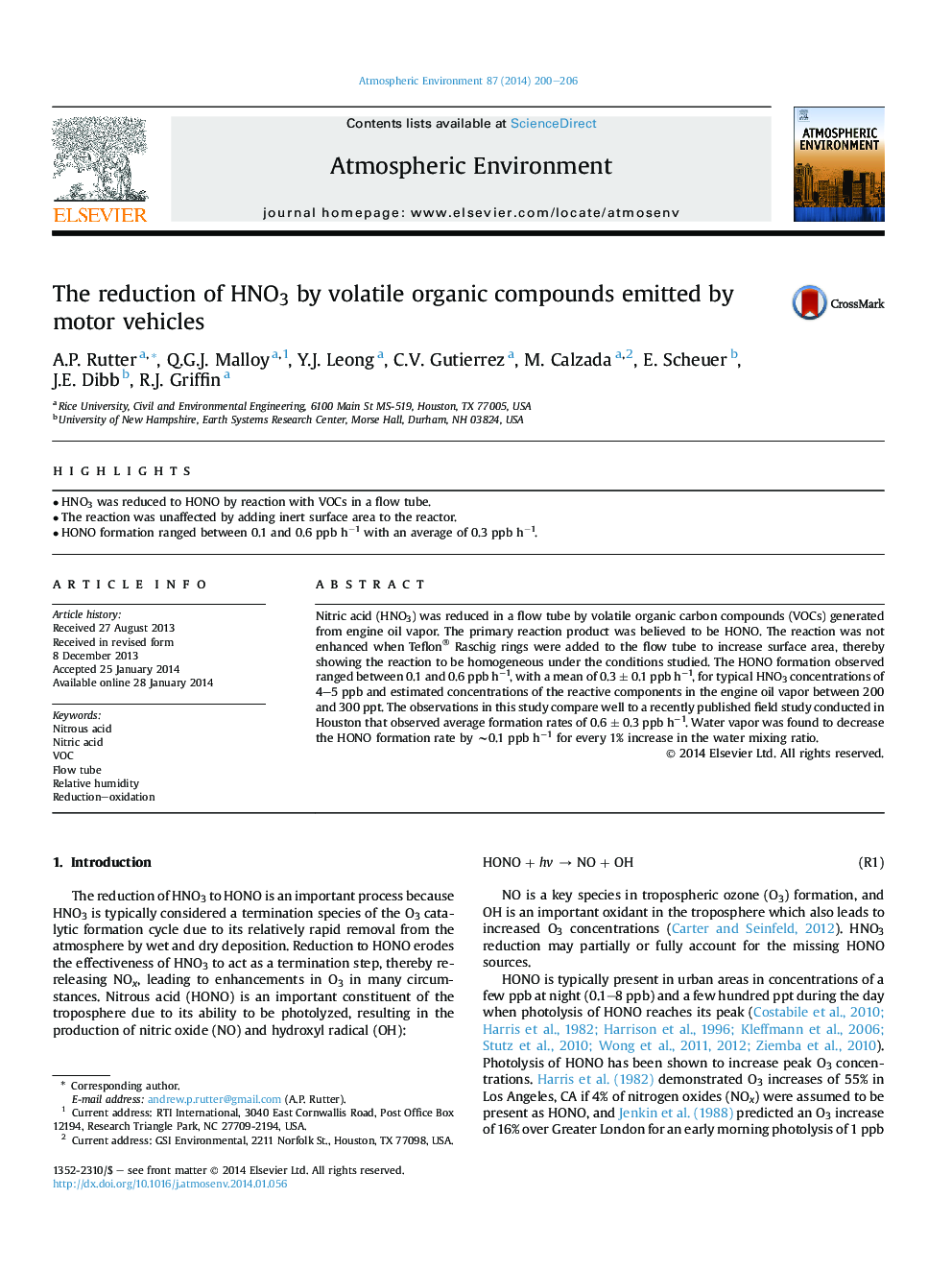| Article ID | Journal | Published Year | Pages | File Type |
|---|---|---|---|---|
| 6340361 | Atmospheric Environment | 2014 | 7 Pages |
Abstract
Nitric acid (HNO3) was reduced in a flow tube by volatile organic carbon compounds (VOCs) generated from engine oil vapor. The primary reaction product was believed to be HONO. The reaction was not enhanced when Teflon® Raschig rings were added to the flow tube to increase surface area, thereby showing the reaction to be homogeneous under the conditions studied. The HONO formation observed ranged between 0.1 and 0.6 ppb hâ1, with a mean of 0.3 ± 0.1 ppb hâ1, for typical HNO3 concentrations of 4-5 ppb and estimated concentrations of the reactive components in the engine oil vapor between 200 and 300 ppt. The observations in this study compare well to a recently published field study conducted in Houston that observed average formation rates of 0.6 ± 0.3 ppb hâ1. Water vapor was found to decrease the HONO formation rate by â¼0.1 ppb hâ1 for every 1% increase in the water mixing ratio.
Related Topics
Physical Sciences and Engineering
Earth and Planetary Sciences
Atmospheric Science
Authors
A.P. Rutter, Q.G.J. Malloy, Y.J. Leong, C.V. Gutierrez, M. Calzada, E. Scheuer, J.E. Dibb, R.J. Griffin,
